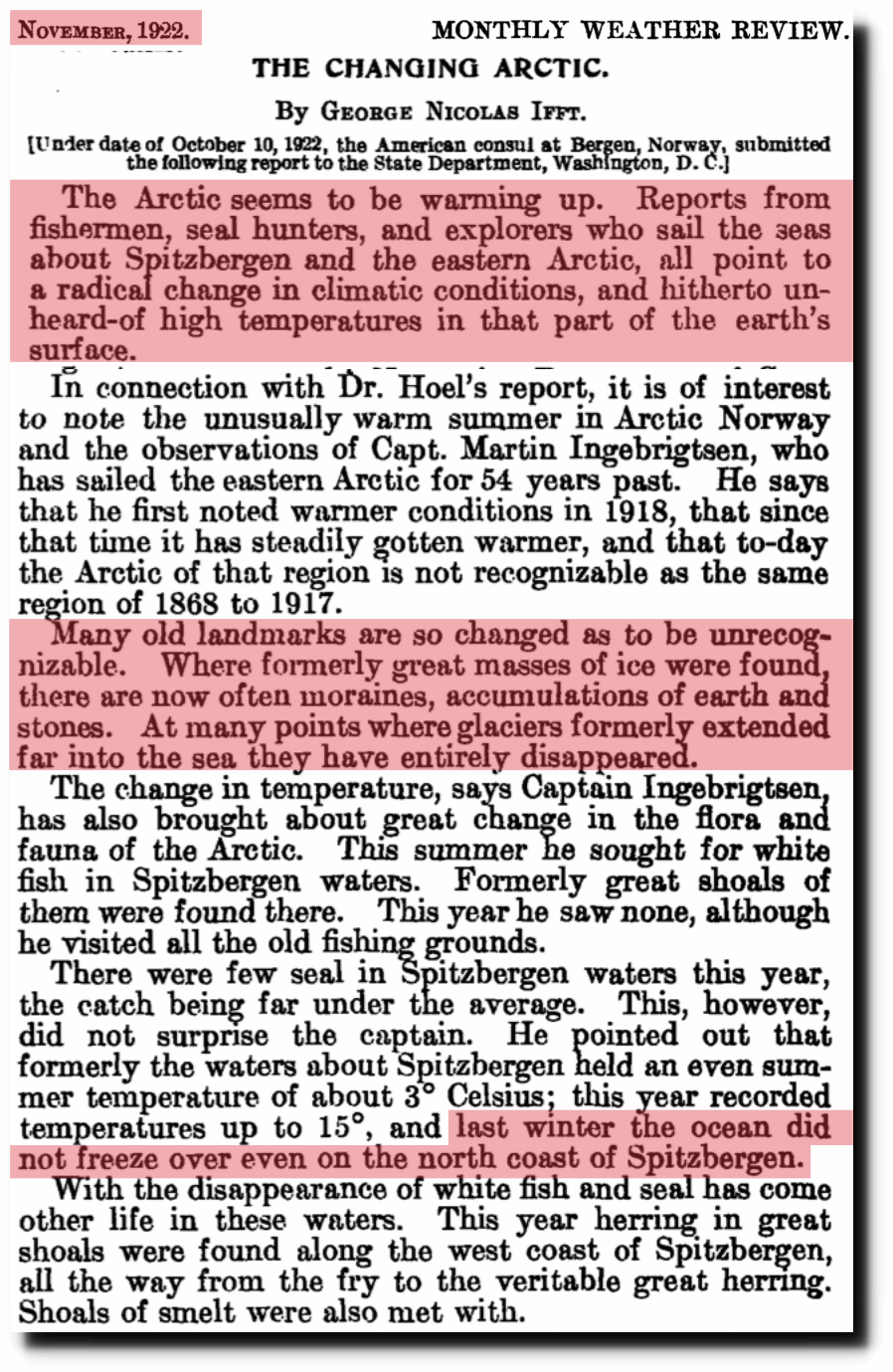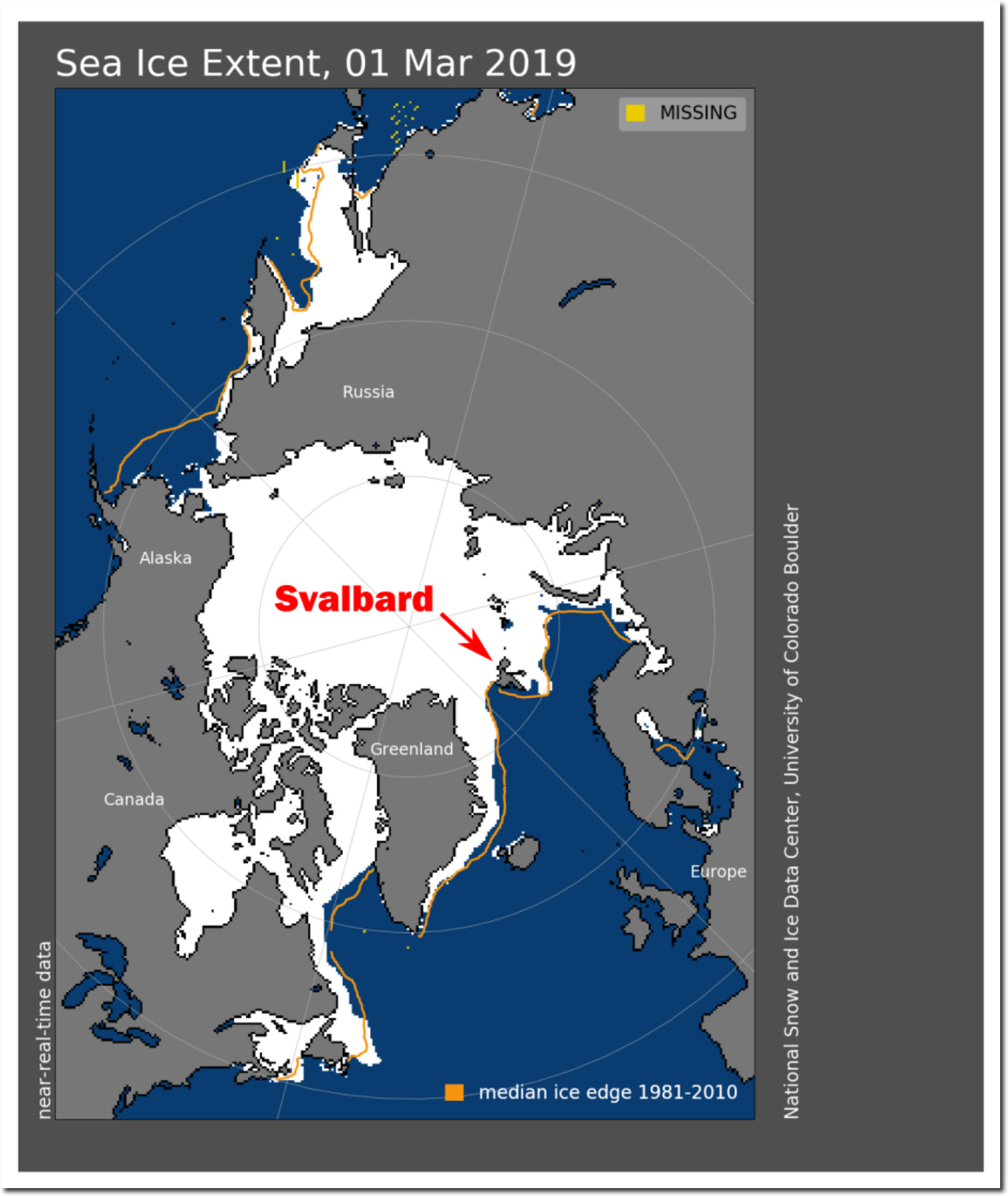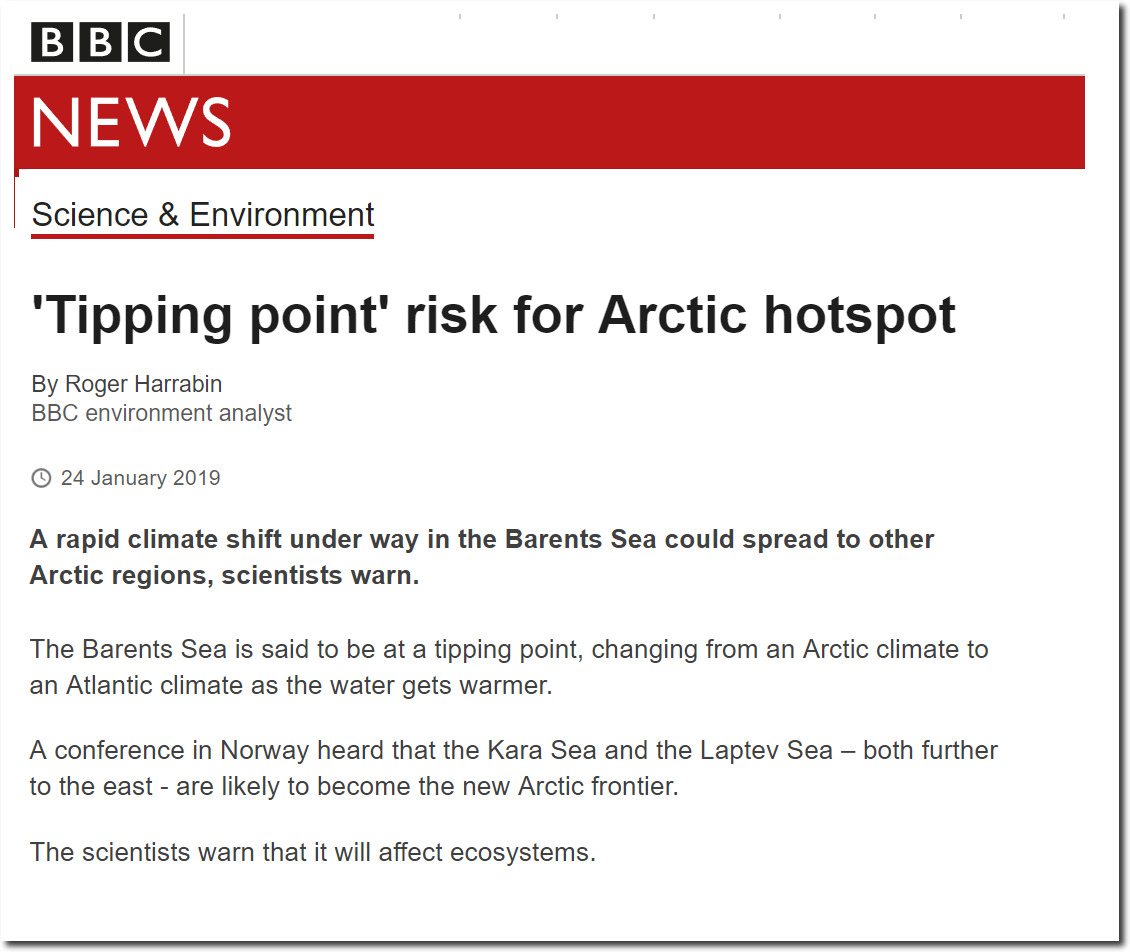During the winter of 1922, there was no sea ice around Spitzbergen (Svalbard.) The water had warmed by 12C and it was too warm for seals. There was a radical change in climatic conditions, with unheard-of high temperatures.
ftp://ftp.library.noaa.gov/docs.lib/htdocs/rescue/mwr/050/mwr-050-11-0589a.pdf
This year, there is lots of ice around Svalbard, and ice in the Barents and Kara Seas is very close to the 1981-2010 median edge.
N_20190301_extn_hires_v3.0.png
Temperatures are very cold there, and the ice is growing rapidly.
Experts describe this increase in ice since 1922 and normal ice conditions – as a tipping point of global warming. As is normally the case, the data shows the exact opposite of claims made by climate scientists.





